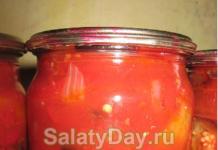The cooking surface itself can be cleaned without much difficulty, but the same cannot be said about the handles. In addition, the task becomes more complicated if it is not possible to remove them from the body. Dishwashing detergent does not remove stubborn grease, and the sponge becomes dirty and it seems that all your efforts are in vain. But you can clean the handles on the stove if you know a few secrets that experienced housewives use.
How to clean removable regulators
First of all, you need to prepare a soap solution. Can be used laundry soap, powder or dishwashing gel. Then remove all switches and place them in the mixture for 10-15 minutes.
During this time, the hands will get wet, but you will still have to work hard, especially if the fat on the products is old. You should remove the regulators from the solution and thoroughly clean them with the hard side of a sponge or toothbrush. Don’t forget about the panel itself to which the handles are attached, since deposits can also form under them. When all parts of the stove have been washed, you need to dry them and install the switches in place.
How to clean fixed handles
There is no way to wash the handles, which are tightly connected to the panel, on the inside, but give them a fresh and neat appearance. appearance quite real. For this you will need:
- cotton pads;
- cotton swabs;
- toothpicks or wooden manicure sticks;
- toothbrush;
- chlorine detergent;
- water.
Moisten the switches with water and clean the handles from grease using wooden sticks. Use a cotton swab to walk around the regulator so that the substances do not get inside, moisten the cosmetic disc in detergent and apply it to the surface of the handles. Clean the switches with a toothbrush on all sides, rinse off any remaining product and dirt with water.

There have long been many different powders and gels on the household chemicals market that eliminate greasy stains and remove dirt from various surfaces. But the price of such compositions is not always affordable, and there are no guarantees that specific remedy will help you wash your hands gas stove. Therefore, you should first take a closer look at proven home methods that will not require serious financial expenditure:
- ammonia;
- lemon juice;
- wet wipes;
- vinegar;
- laundry soap.
Ammonia. You should not use pure ammonia, but pharmaceutical drops called “ammonium-anise drops.” This product is safe, unlike alcohol, which emits harmful fumes.

Apply a few drops to a cotton swab and treat all handles, and then hard to reach places, you should work with a cotton swab. If such a composition is not found, then you will have to use pure ammonia. To do this, you need to wear a respirator and prepare a solution with water at a 1:1 ratio. Carry out cleaning in the same way.
Wet wipes. The composition of the napkins may include citric acid or alcohol, which help in the fight against greasy plaque. You should walk over the surface of the regulator with a napkin several times, changing them periodically. After the procedure, you need to wipe your hands dry with a towel.
This method is safe for the skin of your hands and for the stove itself.
Vinegar. This product can only be used for removable regulators. It will help you get rid of not only fat, but also unpleasant odor. To do this, mix 1 tbsp in a saucepan. vinegar and 0.7 l. water, and place the handles in the solution. Place the container on the fire and boil for 5-7 minutes, then drain the water, rinse thoroughly and dry the hands.
Lemon juice. Wash the handles at the gas or electric stove You can use lemon juice, as it is a good fat solvent. You should squeeze the juice from one fruit, dip a toothbrush in it and clean the regulators on all sides. If the stove is old and such manipulations no longer help, then you can apply baking soda to the brush and wash the problem area, but without applying strong pressure.

Laundry soap. Soap helps housewives fight dirt for a long time, as it easily removes grease and stickiness. It is necessary to grate 50 g on a fine grater. product and pour 150 ml. boiling water
Soak the removable handles in the solution for 3-4 hours, but if the fat is old, it is better to leave them overnight. After the procedure, rinse the handles, wipe with a dry cloth and leave until completely dry.
Clean non-removable regulators with soapy water, a sponge or a toothbrush.
It is better to carry out all procedures with gloves, and when working with ammonia and vinegar, it is advisable to use masks. Also you can't mix different means for cleaning, as this may cause a reaction between them and release harmful fumes. To avoid having to deal with greasy stains, you should wipe the handles after each cooking.
The modern market for household chemicals amazes with its variety of home cleaning products. And yet there is not a single housewife who would not be faced with stains that are especially difficult to clean. Take at least greasy coating and soot, which we constantly struggle with in the kitchen. It takes hours to remove such heavy contaminants, especially if they are deposited in hard-to-reach places. Read our detailed instructions on how to clean stove handles.
If the regulators can be removed
Cleaning removable handles is, of course, easier. Place the removed parts in a container made of a material that does not enter into chemical reaction with the product you are going to use; glass or plastic dishes. Apply grease thinner liberally to the handles and leave them to soak.
At this time, tidy up the panel on which the regulators are mounted: under them, no less severe dirt often forms. If enough time has passed and the deposits on the handles have softened, you need to clean them. It is convenient to do this with a coarse dishwashing sponge or a toothbrush with stiff bristles. Wash the parts thoroughly and reinstall.
If the regulators are not removed
How to clean the handles on the stove if they are not removable? In addition to rags, sponges and cleaning products, you will have to prepare toothpicks or matches, cotton swabs, old toothbrushes: it is almost impossible to clean the surface in difficult places without fine bristles or sharp objects.
The most suitable method in this case is “dry”. Take food or soda ash, dip a damp sponge in it and rub your hands. Toothpicks will help clean the joints and bends. After removing dirt, remove traces of soda, and then wipe the stove dry with special napkins or a soft towel.
What to use for cleaning
To remove grease and carbon deposits from a gas stove, you need to use aggressive means. Many of them can be made independently from cheap components that can be found in any store. In addition to household chemical products designed specifically for removing greasy stains With kitchen appliances, and universal detergents, you can use glass cleaners that contain alcohol - ammonia or ethyl. There are also a lot of “grandmother’s” remedies.
Soda + lemon
The “citrus” method is also good because after cleaning, a pleasant fresh aroma remains in the kitchen for a long time.
- Take half a citrus and squeeze out the juice.
- Using a cotton swab, apply the liquid to the switches, rub lightly and leave for one hour.
- Take a toothbrush, wet it, dip it in baking soda, and clean your hands.
The method is effective only for light stains. To clean stronger ones, take two heaped teaspoons of soda and extinguish it without a large number lemon juice. Apply the sizzling solution to the desired areas as soon as possible. Rub the handles and leave them for an hour, then remove the soaked dirt with a hard sponge.
Ammonia
This product is found in almost every home. Ammonium hydroxide is used to clean furniture, dishes, plumbing fixtures, and jewelry until they shine. To clean the handles of a gas stove, you need to take not pure alcohol, but ammonia-anise drops: the vapors of the concentrate can cause poisoning. It is enough just to moisten a cotton swab with such drops and wipe the contaminated surfaces. When there are no drops at hand, you can use pure ammonia half diluted with water.
Vinegar
This method is only suitable for cleaning removable regulators. Vinegar will not only help remove stubborn stains, but will also kill bacteria and eliminate unpleasant odors.
Remove the switches and place them in a small enamel container. Mix a glass of vinegar and 700 ml of water. Fill the parts with the solution, put it all on low heat, and bring to a boil.
Ten minutes is enough for the dirt to fall away. Now drain the water and let the handles cool. If necessary, clean them with a soft sponge. Then wipe the parts dry and install them on the panel.
Regular intensive use of a kitchen stove leads to contamination - even the most careful housewife cannot avoid this. And if you put the hob in order, it’s a simple matter (there are many special means), then cleaning plastic handles can be problematic. We'll tell you how to do this quickly and without harm to the stove.
Types of pollution
Fire controls are exposed even more often than the hob.
Handles get dirty:
- splashes of fat during frying;
- boiling liquids;
- with the hands of the cook, when there is no time to wash them during the cooking process;
The handles are made of heat-resistant plastic, so they are difficult to clean with conventional means - dirt eats into the surface.
To control the stove, two types of handles are used: removable and non-removable. The first type is easier to clean - they can be removed, placed in detergents and kept there for a while. This will not work with the second type.

Cleaning with folk remedies
In cases where a trip to the household chemicals store in the evening was not part of your plans or when cleaning the kitchen needs to be done quickly, folk remedies will help.
All manipulations with detergents, regardless chemical composition, carried out wearing rubber gloves.

A simple way to remove fat deposits is to use wet wipes to wipe your hands.
The impregnation usually contains citric acid and castor oil, which effectively remove dirt. They are enough to remove minor grease stains. After cleaning, wipe the handles with a clean cloth.
Alcohol medical wipes also have good cleansing properties.

Clean the handles with a solution prepared from 50 g of laundry soap dissolved in 100 ml of boiling water. The soap is first grated on a fine grater.
- Removable handles are soaked in the solution overnight; in the morning, just wipe with a soft sponge and rinse under running warm water.
- Fixed regulators are cleaned with a hard sponge, an old toothbrush, cotton swabs, toothpicks - any suitable items.
Cleaning ends by wiping the handles with a clean damp cloth. Before installing the removable parts in place, they are allowed to dry completely.
In addition to laundry soap, it is allowed to use any other types, but for severe contamination, laundry soap is still more effective.

Vinegar should only be used for cleaning. removable handles. The solution is prepared from two tablespoons of essence and 1 liter of water. The handles are poured with the solution and boiled for 5-7 minutes over low heat, after which they are allowed to cool without removing them from the pan or ladle.
After cooling, the parts are washed under running water, dry and wipe dry with a soft cloth. The procedure ends with installing the hob on the panel.
In addition to removing contaminants, vinegar kills bacteria and removes ingrained unpleasant odors.

Ammonia
A solution of ammonia is used for all types of switches - no soaking is required.
- Ammonia is mixed with water in equal proportions.
- The composition is applied to the stains with cotton swabs, sticks, or a toothbrush.
- After five minutes of exposure, remove any remaining alcohol with a clean, damp cloth.
The method is convenient for removing contaminants in hard-to-reach places - from below and in areas adjacent to the front panel of the stove.
Attention! Inhaling ammonia can cause poisoning. Do not use this method if you are allergic to the substance.

Citric acid can dissolve almost any dirt. It is enough to squeeze the juice of one lemon and apply it with a brush to the dirty surface.
Fruit can be replaced by dissolved in warm water citric acid powder.
After 2-3 minutes, wipe the juice with a damp cloth. Sticky residue substances are removed with a solution of baking soda.

Baking soda is good for stubborn dirt. Rub soda into the surface of the handle with a damp sponge for 2-3 minutes. After this, the part is washed with a damp cloth. If necessary, repeat the procedure. After cleaning, wash your hands thoroughly with running water.

Mustard eats away fat deposits and disinfects surfaces.
To clean, pour mustard powder onto a slightly damp sponge and wipe the dirty switches.
The second way is to dilute the powder warm water and coat the contaminated surface with this paste. The result is achieved quickly - in 7-10 minutes. Remove any remaining product with a damp cloth and wipe dry.

Popular store products
In cases where it was not possible to cope with folk remedies or there is no need for this, they use purchased household chemicals.
Let's list the products designed for cleaning kitchen appliances that can easily help remove grease from the handles of a gas stove.
- Soda Ash– a strong alkaline agent that dissolves any fatty deposits. To clean handles, dissolve 3 tablespoons of powder in 1 liter of water. Handles are placed in the solution for 3-5 minutes, washed with plenty of water, and dried. Work with rubber gloves.
- "SANITA Minute" (spray) – effective remedy, dealing with dirt in one minute. By waiting 5-10 minutes after applying the gel, fat is removed without effort. "Sanita" removes all types of contaminants.
Work with household product wear rubber gloves - it contains aggressive substances. The price of the bottle is about 100 rubles.
- "Cinderella Antifat" contains soda ash, which is corrosive old stains. Suitable for cleaning any surfaces. For ease of use, the bottle is equipped with a sprayer. The price of the product in household chemical stores is approximately 100 rubles.
- Synergetic. The liquid is free from aggressive chemicals, 100% biodegradable. Used to clean any kitchen appliances. Release form: gel or liquid spray. People with allergic reactions should wear gloves when working. Price – 200-300 rubles.
- "Cilit Bang Anti-grease" (spray) copes even with burnt fat, limescale. Additives fight mold. When purchasing, you can spend 150 rubles.
The pleasant smell hides secretions that irritate the mucous membrane. Ventilate the kitchen after using the product.
- "Mr. Muscle" (spray). It will take 10-15 minutes to remove dirt. Cleans plastic, metal, glass surfaces, that is, suitable for any gas stove handles. The product has an antibacterial effect. Using rubber gloves – prerequisite. Price – 150-200 rubles.
- Cif kitchen cleaner, gel or spray. Cleans any surface. Before applying the gel, moisten the contaminated areas with water. The waiting time before washing off the composition is 10-15 minutes. Price – up to 200 rubles.
So, today the range of products that can be used to clean the handles of gas stoves at home is quite wide. The choice depends on the preferences of the housewife and the family budget.
First assistant in cooking - kitchen stove. Whether it is gas, electric or induction, we use the stove every day. The first thing we touch when turning on the stove is the burner switches on the front panel. Simple knobs that allow you to control the power level hob. During cooking, they often become dirty - either they were hastily turned on with their hands, sticky from the dough, or fat began to splash from the frying pan in all directions. Cleaning these controls turns out to be difficult: the detergent does not dissolve the grease, and the sponge itself becomes sticky and dirty, but does not clean the switches. What to do and how to clean the handles on the stove? We will talk about this in detail later in our article.
Removable and non-removable handles - cleaning rules
Determining which regulators are on your gas stove is not difficult. If, by slightly pulling the handle towards you, it is removed, then you can rest assured that the switches are removable. If you make an effort, twist the handle in all directions, pull towards yourself with all your might, but it does not give in - alas, the regulator is not removable. In this case, do not try to forcefully disconnect the regulator, so as not to inadvertently break it.
So, two types of stove handles and options for cleaning them.
1. Removable handle
Cleaning dirt from the removable handle is not a troublesome task. If the regulators are removed, proceed as follows. Remove all switches. Prepare a container with hot water(about 80 °C). IN hot water dissolve the grated laundry soap, washing powder or dishwashing detergent. Place all handles in soapy water for 15 minutes. Next, grab an old toothbrush and try to thoroughly clean the entire switch, inside and out. The regulators of the gas stove will sparkle with cleanliness.
2. Fixed handle
It will be more difficult with regulators that are tightly attached to the hob. It is almost impossible to clean the handles on the inside, but on the outside it is quite possible. The following will come to your aid: cotton swabs, cotton swabs, toothpicks, a toothbrush. Lightly wet the handles and clean hard-to-reach places from dirt with a toothpick. Absorb any remaining dirt around the switches with cotton swabs. Using a cotton swab soaked in chlorine detergent, thoroughly clean the regulators. Then rinse off the product with warm water using a sponge.


Top 5 folk remedies for removing dirt from stove handles
The household goods department sells many powders, gels, and solutions that effectively dissolve dirt and grease from any surface. The price of these miracle jars is high, but there is no guarantee that this product will help wash your hands. Before emptying your wallet, try “penny” products that have been tried and tested by the people and cope with stains no worse than store-bought and expensive chemicals.
Ammonia
There is a bottle of ammonia in every first aid kit. Ammonium hydroxide is surprisingly good at cleaning stains from furniture, dishes, plumbing fixtures, and even jewelry. Speaking about how to clean the handles of the stove, take note: you need to use not pure ammonia, but drops called “ammonia-anise”. Inhaling ammonia vapor from ammonia can cause poisoning. The drops are safe - they don’t even need to be diluted. We wet the cotton wool with drops and wipe the dirty regulators. In hard-to-reach places, clean with a cotton swab dipped in drops. If you plan to wash your pens with alcohol, then use a diluted solution with water in a 1:1 ratio.
Lemon juice
Concentrated lemon juice dissolves any dirt.
- Squeeze the juice of 1 lemon.
- Prepare unnecessary toothbrush.
- Dipping a brush into lemon juice, thoroughly clean the surface of the stove's controls in areas of contamination. If the switch is so dirty that there are many small greasy spots on it that cannot be washed off, then dip the brush in baking soda (not baking soda!) and lightly rub the problem area.
- Dip the brush alternately in sour juice and soda to completely clean the handles. At the end of the handle, rinse with a sponge and clean water to wash away the stickiness of the juice and the remaining soda.


Wet wipes
Sometimes, in order to clean the handles, it is enough to wipe them several times with wet wipes. Many wet wipes contain castor oil and citric acid, which effectively remove dirt. This is a gentle cleaning method for both the gas stove controls and your hands. After wrapping a damp cloth around your finger, carefully treat and wipe the surface of the handles. Change the napkin when it gets dirty. After cleaning, wipe the stove switches dry with a clean cloth.
Vinegar
Using vinegar is only suitable for removable stove handles. It will dissolve strong corrosive contaminants, eliminate bacteria and unpleasant odors.
- Remove the regulators and place them in a small saucepan or ladle.
- Mix 200 ml vinegar and 700 ml water.
- Fill the handles with the solution. Place over medium heat and bring to a boil. Boil for 7-10 minutes.
- Drain the water into the sink and let the switches cool. Dry and wipe dry, place back on the stove panel.
Laundry soap
A strong soap solution made from laundry soap will clean your handles well from greasy sticky stains and dirt. Grate 50 g of soap on a fine grater. Mix with 100 ml of boiling water.
If the regulators are removable, they should be soaked in soapy water overnight. After 8-10 hours, wipe them with a sponge and rinse in clean water. Fixed handles need to be cleaned using the hard side of the sponge. Dip the sponge into the solution to remove dirt.
When finished cleaning, wipe the handles with a damp cloth and let them dry completely.
If your stove is plugged in, unplug it before cleaning. Wipe the handles after each cooking, then dirt will not accumulate on them, and your stove will always be clean and tidy.
The stove plays the role of the first assistant in cooking. It doesn’t matter whether it is gas, electric or induction, we still use it every day. And our first touch when turning on the stove is the burner switches. During cooking, they become dirty, either they are turned on with unwashed hands, or fat splashes from the frying pan, and the like. Cleaning such regulators is not entirely easy. Detergents are not able to dissolve grease, the sponge itself becomes greasy, and the regulators are not cleaned.
To begin with, you will need to determine what type of regulators are installed on your stove very simply, just pull them towards you and if they come off, then the regulators are removable, but if you rest and pull it towards you with all your might and it remains in place, then , alas, the regulator is not removable.

In this case, you should not try to remove it by force, as this can break it.
For example, it is not always possible to quickly clean the switches on a kitchen electric stove. folk ways. But here are anise drops or ammonia - water method This will come in very handy; be prepared that cleaning the grease will take longer than expected. But it’s easy to clean dirt on the removable gas stove regulator. If the regulator is removable, then the cleaning procedure should be as follows: remove all the handles, prepare a container with hot water, almost boiling water, then dissolve the grated laundry soap, powder, dishwashing detergent in this water and place all the removed regulators in this solution for about 15 minutes, after that we take an old toothbrush and clean the entire switch inside and out as thoroughly as possible. Ultimately we will get clean regulators.
How to remove handles from a Hephaestus gas stove
Any Hephaestus gas stove has removable regulators. But it all depends on the care of the stove. If you wipe your assistant with a damp sponge after each use, then you will not be afraid of severe contamination. Naturally, with such care of the stove, the regulators will not become covered in grease and can be easily removed if necessary.
For example, removing regulators from gas stoves Hephaestus, Hans and Indesit will not be difficult for you. To do this, you just need to pull the regulator along with the circles towards you.
If suddenly some problem arises during removal, then you need to pry them off with a knife, but this must be done carefully.

It will not be difficult for you to clean the regulators from contamination at home. Cleaning the handles of the stove seems difficult and difficult only at first glance. painstaking work. And if you know how to do it correctly, then it will generally turn into a joy, and the stove will be completely clean, it’s cozy and comfortable.
Do-it-yourself gas stove cleaning
Not all housewives and owners of gas stoves know how this should happen. proper cleaning do-it-yourself slabs, as well as what you need for this. Folk remedies suitable for those housewives who prefer not to buy household chemicals, but to use safe methods that have been proven over the years.
The disadvantages of household chemicals are, low level of safety, challenge allergic reaction and storage requirements.
And besides, you can use household chemicals only with gloves, so as not to damage the skin of your hands.

If you still prefer synthetic products, then it would not be superfluous to learn about alternatives and safe ways. The washing and cleaning mixture can be made at home from available products that are found in any home. As a rule, such mixtures wash away dirt no worse than all popular household chemicals, and at the same time they are also safe.
To clean a gas stove and oven you can use:
- Citric acid;
- Vinegar;
- Ammonia;
- Soap dissolved in hot water;
- Baking soda.
Using these components, you can clean not only the stove, but also other kitchen appliances, such as a microwave oven, electric kettle, multicooker, juicer and other household appliances.
If there is a lot of fat: how to wash a gas stove
For the highest quality cleaning and removal of all contaminants, it is necessary to carry out preliminary preparation.
Hot water poured onto the surface of the stove with baking soda makes it possible to soften old dirt.
Sprinkle soda on wet surface spread in an even layer and let stand for 30-40 minutes. This method is not complicated and makes it possible to clean the stove and oven. The oven can also be cleaned this way.

After waiting time, you can start cleaning; water and baking soda must be removed from the surface of the stove using a soft sponge.
In no case should steel wool be used when cleaning the stove and oven, as they can cause damage to the surface, but it is better to use a sponge and a toothbrush or cotton swabs, but this is in the most difficult to reach places.
To clean the grate on a gas stove, you must use the soap solution described above. Also great aids There will be citric acid or juice, vinegar. They can be used in place or separately. Ammonia and vinegar can remove dried and burnt-on stains on the surface of a kitchen gas stove.
We tried to talk about the most known methods cleaning handles on gas stoves. Of course, complex cleaning will not be necessary if you spend a few minutes on your hands after each cooking process, but situations are different and perhaps our advice is exactly what you will need in the near future. Be patient, use detergents, and start sprucing up your pet.


















